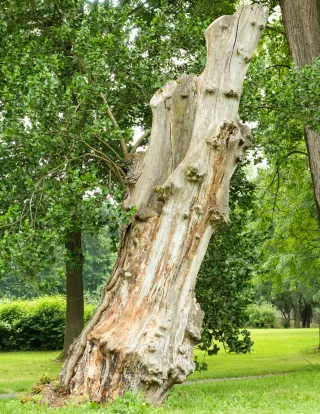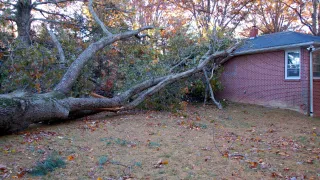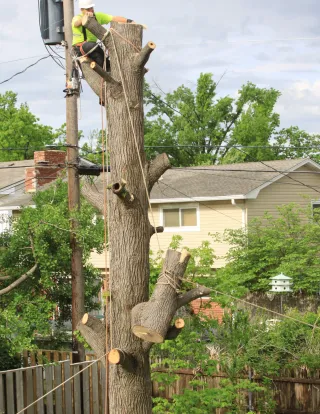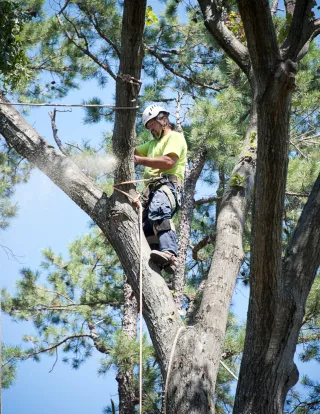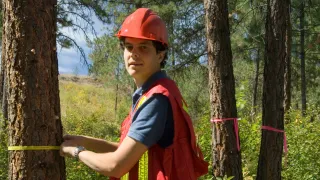
Spring Tree Health Checklist: What to Look for After a Chattanooga Winter
Winter weather can be tough on trees — especially here in the Chattanooga area where sudden storms, heavy winds, and freezing temperatures can leave damage behind that isn't always obvious at first glance.
As things start to green up again, now’s the perfect time to take a walk through your yard and check in on your trees. Think of it like a wellness visit — the earlier you catch an issue, the more options you have.
At Out on a Limb For You, we believe that knowing what to look for is empowering. You don’t have to be an arborist to spot signs that something might not be right. This checklist will walk you through the same things we pay attention to when spring rolls around — so you can feel more confident as a homeowner and tree steward.
1. Look for Broken or Hanging Limbs
Winter winds and ice buildup can crack or break limbs — and they don’t always fall right away. Sometimes they’re still hanging in the canopy, waiting for a breeze or storm to bring them down.
Walk around each tree and look up. Do you see anything hanging or oddly angled?
Are any branches split or cracked where they connect?
Not every broken branch is an emergency, but they can become one quickly.
A limb that’s just barely hanging on could fall during the next storm — or even on a calm day with the right gust of wind. Just being aware of them can help you decide what needs attention now versus what can wait.
2. Examine the Trunk for Damage
The trunk is the tree’s backbone — and even small signs of damage can point to bigger issues over time.
Look for deep cracks, missing bark, or fungus like mushrooms near the base.
Pay attention to spots that look soft, hollow, or sunken.
You may also notice old pruning wounds or scars from past impacts (like a mower or weed trimmer). These don’t always mean trouble, but they’re worth monitoring.
Sometimes damage is purely cosmetic, and other times it’s a red flag for rot, disease, or structural weakness. Trust your instincts. If something doesn’t look quite right, it’s worth a closer look.
3. Check for Leaning or Uprooting
A slight lean isn’t always a problem, especially if the tree has grown that way for years. But if the lean is new — or if it seems to be getting worse — it could mean the tree’s root system has been compromised.
Is the soil around the base cracked or raised?
Do the roots look like they’re shifting or lifting?
These signs can be subtle but serious. Trees that start to lean suddenly may be at risk of falling, especially during storms or heavy rains. Keeping an eye on changes over time is key.
4. Spot Dead or Bare Areas
By mid-spring, most trees should be showing signs of life. Bare patches or brittle twigs can mean part of the tree didn’t make it through winter.
Are there branches with no buds, flowers, or leaves?
Do you see sections that seem out of sync with the rest of the tree?
Sometimes these areas are just slow to wake up. Other times, they’re a sign of dieback, disease, or internal damage.
These branches can become brittle and dangerous as the year goes on — or they may just need a trim to redirect energy toward healthy growth.
5. Evaluate for Overgrowth and Crowding
Spring is growth season — and that’s a good thing, but it can also lead to crowding or stress.
Are branches rubbing together or crossing over one another?
Are limbs getting too close to the roof, siding, or power lines?
Even light trimming now can make a big difference in preventing future breakage, improving airflow, and giving your trees the space they need to grow strong and healthy.
It can also help your yard look more intentional and well cared-for.
Bonus Tip: Don’t Forget the Ground
The health of your trees starts at the roots — literally. As you walk your yard, take a look at the space around the base:
Are roots exposed and vulnerable to mower or foot traffic?
Do you notice erosion, pooling water, or compacted soil?
Mulch, grading, or other soil care can go a long way in supporting your tree’s overall health. A well-mulched root zone helps retain moisture, regulate temperature, and protect against damage.
Just make sure the mulch is pulled a few inches back from the trunk — no “mulch volcanoes,” please!
Final Thoughts
You don’t have to spot every issue or know exactly what to do next. Just taking a closer look this time of year can give you peace of mind — or help you catch problems early while they’re still easy to fix.
And if something does catch your eye — a strange crack, a sudden lean, a branch that doesn’t look quite right — you don’t have to figure it out alone.
We’re happy to walk your yard with you, explain what’s normal and what’s not, and help you make decisions that feel right for your property and your peace of mind.
📞 Call or text (423) 443-4533 if you'd like a second opinion or just want to talk through what you’ve noticed.


